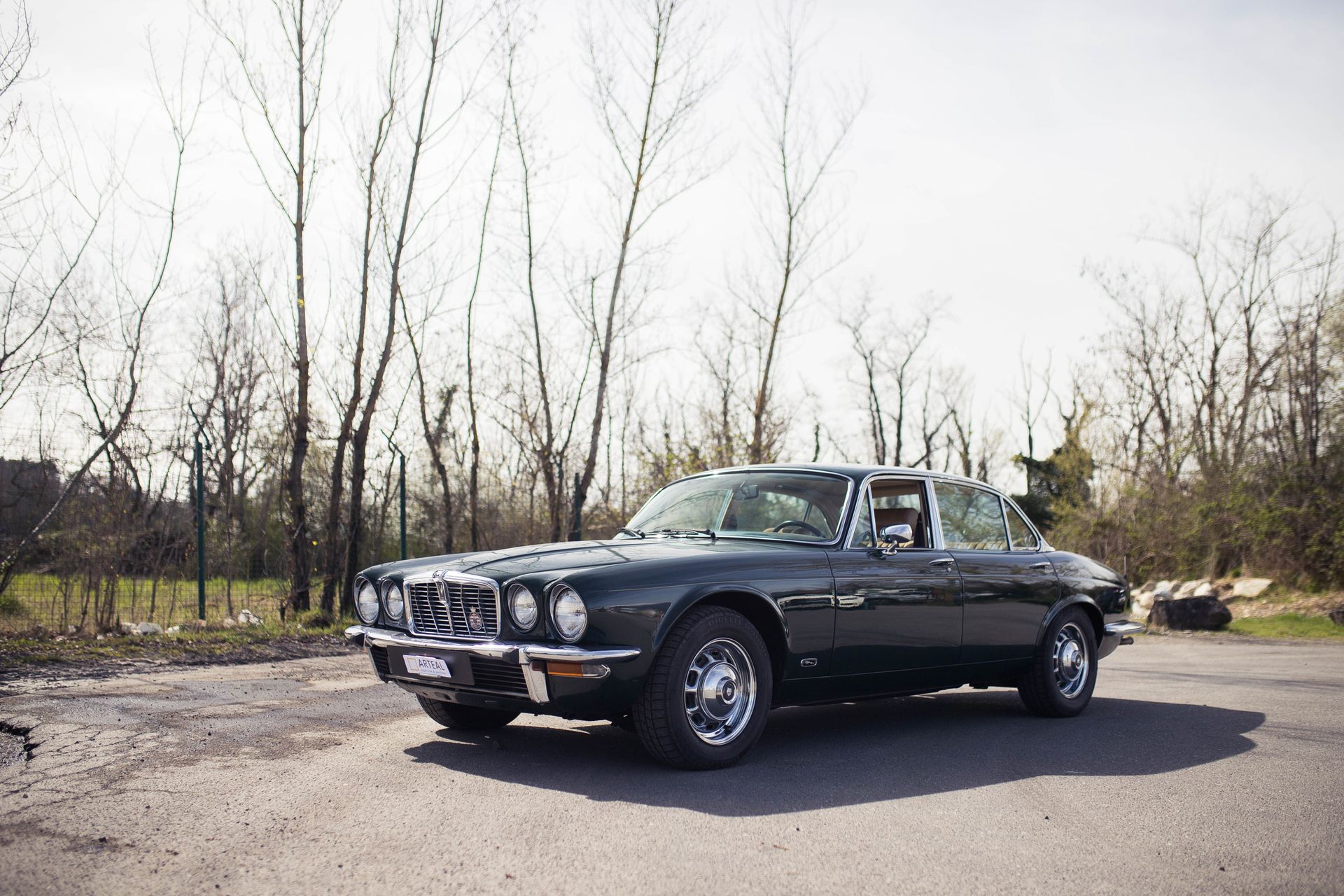Description
JAGUAR XJ 12 Series 2 In the mid-60s, Jaguar's charismatic CEO, Sir William Lyons, felt that his sedan range was slowly beginning to age, and that they were cannibalizing each other. Indeed, the 240 & 340 (ex MK 2), S-Type and 420 were all in the same category, with the exception of the larger 420 G, which lasted until 1970. To remedy this situation, a completely new car was designed. It would replace the 3 models mentioned above. Called the XJ 6, it was the master's latest baby. Presented at the 1968 Paris Motor Show, it was unanimously acclaimed by the public and journalists alike, and quickly became known as "the most beautiful sedan in the world". In addition to its racy styling, the 420 G's sophisticated rear axle, with double coil springs and inboard disc brakes, was retained. Its double-wishbone front axle and rack-and-pinion steering are new. It is available with the usual 4.2-liter twin-shaft 6-cylinder engine, as well as a new 2.8-liter version, with manual or automatic gearbox. It stands out for its excellent roadholding and high level of comfort. More luxurious versions are also available under the "Daimler" brand. In 1972, the model adopted the new 5.3-liter V12 engine previously used in the E-Type. It was only available with an automatic gearbox. A few months later, a version with a 10 cm longer wheelbase appeared. Total production of this first series reached 82,209 units (or 82,217, depending on the source). At the 1973 Frankfurt Motor Show, Jaguar presents the Series 2, available with the 6-cylinder 4.2 l and the 5.3 l V12. The aesthetic change was to raise the front bumper, mainly to meet American safety standards, a very important market for the brand. Raising the bumper means reducing the height of the grille by the same amount. Inside, a new dashboard groups all the dials in front of the driver's eyes. A brand-new body version makes its appearance, the 2-door coupé, without pillars. For 1975, a smaller 3.4-liter engine is offered. Electronic fuel injection now powers the V12 engine. The career of this second model continued until 1979, when 92,376 units were produced in all body styles. The XJ's life continued with the Series 3, redesigned with the help of Pininfarina. The model presented here was first registered on August 1, 1977. It is in good overall condition. It has a beautiful patina, both inside and out. It comes from an important collection in which it has been kept for 7 years and has 14,963 km on the odometer.
36
JAGUAR XJ 12 Series 2 In the mid-60s, Jaguar's charismatic CEO, Sir William Lyons, felt that his sedan range was slowly beginning to age, and that they were cannibalizing each other. Indeed, the 240 & 340 (ex MK 2), S-Type and 420 were all in the same category, with the exception of the larger 420 G, which lasted until 1970. To remedy this situation, a completely new car was designed. It would replace the 3 models mentioned above. Called the XJ 6, it was the master's latest baby. Presented at the 1968 Paris Motor Show, it was unanimously acclaimed by the public and journalists alike, and quickly became known as "the most beautiful sedan in the world". In addition to its racy styling, the 420 G's sophisticated rear axle, with double coil springs and inboard disc brakes, was retained. Its double-wishbone front axle and rack-and-pinion steering are new. It is available with the usual 4.2-liter twin-shaft 6-cylinder engine, as well as a new 2.8-liter version, with manual or automatic gearbox. It stands out for its excellent roadholding and high level of comfort. More luxurious versions are also available under the "Daimler" brand. In 1972, the model adopted the new 5.3-liter V12 engine previously used in the E-Type. It was only available with an automatic gearbox. A few months later, a version with a 10 cm longer wheelbase appeared. Total production of this first series reached 82,209 units (or 82,217, depending on the source). At the 1973 Frankfurt Motor Show, Jaguar presents the Series 2, available with the 6-cylinder 4.2 l and the 5.3 l V12. The aesthetic change was to raise the front bumper, mainly to meet American safety standards, a very important market for the brand. Raising the bumper means reducing the height of the grille by the same amount. Inside, a new dashboard groups all the dials in front of the driver's eyes. A brand-new body version makes its appearance, the 2-door coupé, without pillars. For 1975, a smaller 3.4-liter engine is offered. Electronic fuel injection now powers the V12 engine. The career of this second model continued until 1979, when 92,376 units were produced in all body styles. The XJ's life continued with the Series 3, redesigned with the help of Pininfarina. The model presented here was first registered on August 1, 1977. It is in good overall condition. It has a beautiful patina, both inside and out. It comes from an important collection in which it has been kept for 7 years and has 14,963 km on the odometer.
